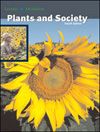 |
1 |  | 
1. The physiological effects of caffeine include a reduced heartbeat, decreased blood pressure, and dilated blood vessels. |
|  | A) | True |
|  | B) | False |
 |
 |
2 |  | 
2. Recent studies indicate that coffee drinkers have a lower incidence of _______. |
|  | A) | a. multiple sclerosis |
|  | B) | b. cancer |
|  | C) | c. Parkinson’s Disease |
|  | D) | d. Hodgkin’s Disease |
|  | E) | e. Alzheimer’s disease |
 |
 |
3 |  | 
3. Coffee fruits that produce a single pea-shaped bean called a peaberry have a much weaker caffeine concentration and are sold as decaffeinated coffee. |
|  | A) | True |
|  | B) | False |
 |
 |
4 |  | 
4. Which of the following occurs during the coffee roasting period? |
|  | A) | a. Sugars convert to starch. |
|  | B) | b. Caffeol is released. |
|  | C) | c. Caffeine content increases. |
|  | D) | d. all of the above. |
|  | E) | e. a and b are correct. |
 |
 |
5 |  | 
5. The Swiss-Water decaffeination process removes caffeine from coffee by using carbon dioxide that penetrates the bean and dissolves the caffeine. |
|  | A) | True |
|  | B) | False |
 |
 |
6 |  | 
6. _______ is espresso coffee with steamed milk, whereas ________ is espresso coffee with chocolate syrup. |
|  | A) | a. Caffe latte, caffe mocha |
|  | B) | b. Cappuccino, caffe latte |
|  | C) | c. Caffe latte, cappuccino |
|  | D) | d. Cappuccino, caffe mocha |
|  | E) | e. Caffe mocha, cappuccino |
 |
 |
7 |  | 
7. Tannins in tea are believed to discourage herbivores from eating the leaves and are responsible for staining teeth and teapots. |
|  | A) | True |
|  | B) | False |
 |
 |
8 |  | 
8. What 1904 invention revolutionized tea drinking in the U.S.? |
|  | A) | a. mechanized tea combine |
|  | B) | b. ice cubes |
|  | C) | c. whistling teapot |
|  | D) | d. tea bag |
|  | E) | e. both b and d |
 |
 |
9 |  | 
9. J.S. Fry and Sons chocolate company was the largest chocolate manufacturer in the world during the late 1800s. |
|  | A) | True |
|  | B) | False |
 |
 |
10 |  | 
10. In nature, cacao seed dispersal is dependent on _______. |
|  | A) | a. animals |
|  | B) | b. wind |
|  | C) | c. flowing water |
|  | D) | d. humans |
|  | E) | e. none of the above |
 |
 |
11 |  | 
11. Which of the following is NOT a pathogen of cacao? |
|  | A) | a. witches broom |
|  | B) | b. frosty pod rot |
|  | C) | c. black pod rot |
|  | D) | d. stem rust |
|  | E) | e. none of the above |
 |
 |
12 |  | 
12. The beneficial compounds found in chocolate include antioxidants, vitamin E, and stearic acid. |
|  | A) | True |
|  | B) | False |
 |
 |
13 |  | 
13. The recently uncovered scandal surrounding cocoa plantations in West Africa involves |
|  | A) | a. the use of the deadly pesticide DDT. |
|  | B) | b. child slave labor. |
|  | C) | c. embezzlement of millions of dollars. |
|  | D) | d. all of the above. |
|  | E) | e. none of the above. |
 |
 |
14 |  | 
14. The seeds from the cacao tree are used to produce chocolate, Coca-Cola, and cocaine. |
|  | A) | True |
|  | B) | False |
 |
 |
15 |  | 
15. Aside from Camellia, tea is also made from the leaves of ________ trees. |
|  | A) | a. nutmeg |
|  | B) | b. Mediterranean oak |
|  | C) | c. holly |
|  | D) | d. olive |
|  | E) | e. cacao |
 |
 |
16 |  | 
16. Caffeine is found in which of the following? |
|  | A) | a. tea leaves |
|  | B) | b. coffee seeds |
|  | C) | c. kola seeds |
|  | D) | d. all of the above |
|  | E) | e. a and b are correct |
 |
 |
17 |  | 
17. The recent findings from research on tea drinking summarize that _______. |
|  | A) | a. black tea lowers total and LDL cholesterol levels. |
|  | B) | b. a chemical compound in tea can boost the body’s immune response to pathogens. |
|  | C) | c. tea had no effect on HDL cholesterol level. |
|  | D) | d. all of the above |
|  | E) | e. both a and b |
 |
 |
18 |  | 
18. Penny Universities that were common in London during the 17th century served which of the following beverages? |
|  | A) | a. green tea |
|  | B) | b. chocolate |
|  | C) | c. black tea |
|  | D) | d. coffee |
|  | E) | e. all of the above |
 |



 2006 McGraw-Hill Higher Education
2006 McGraw-Hill Higher Education